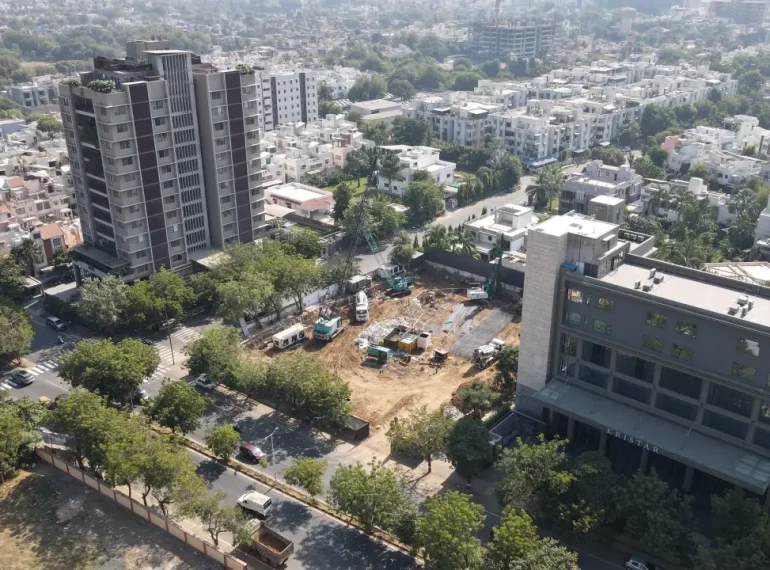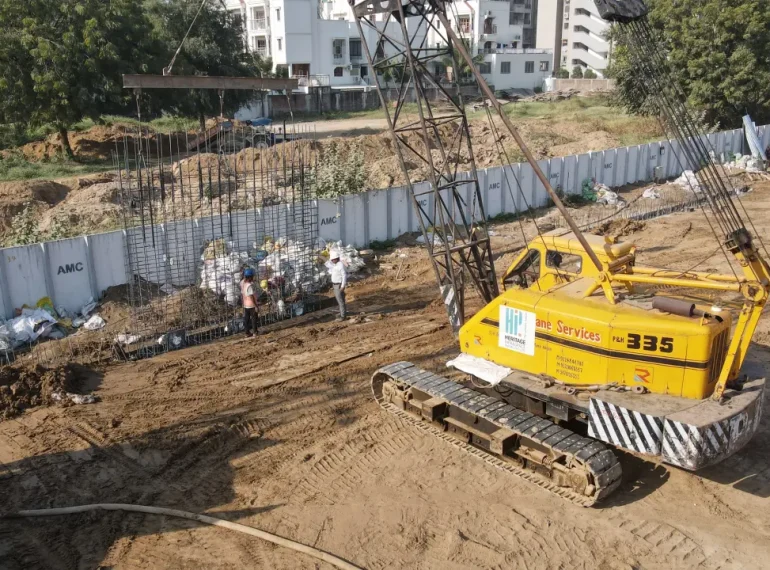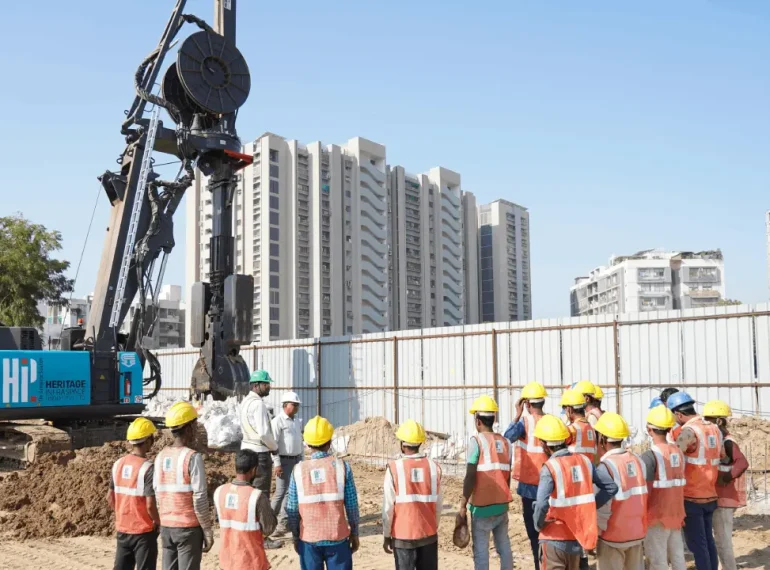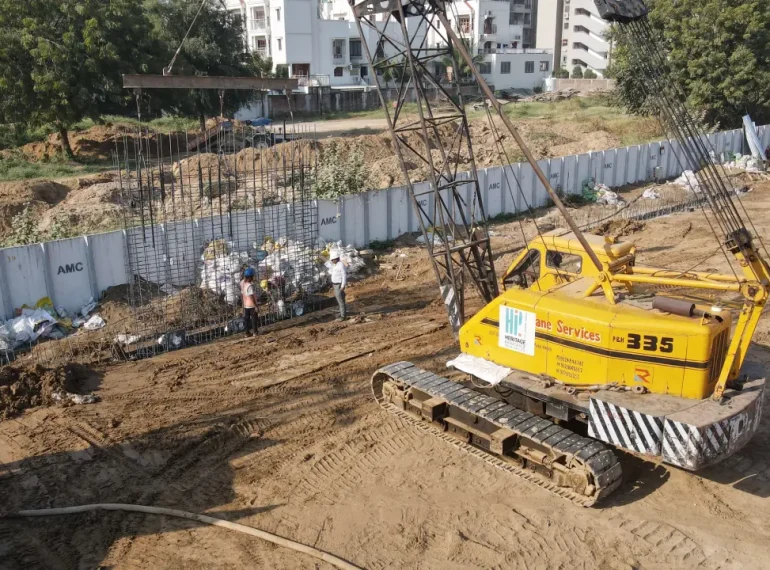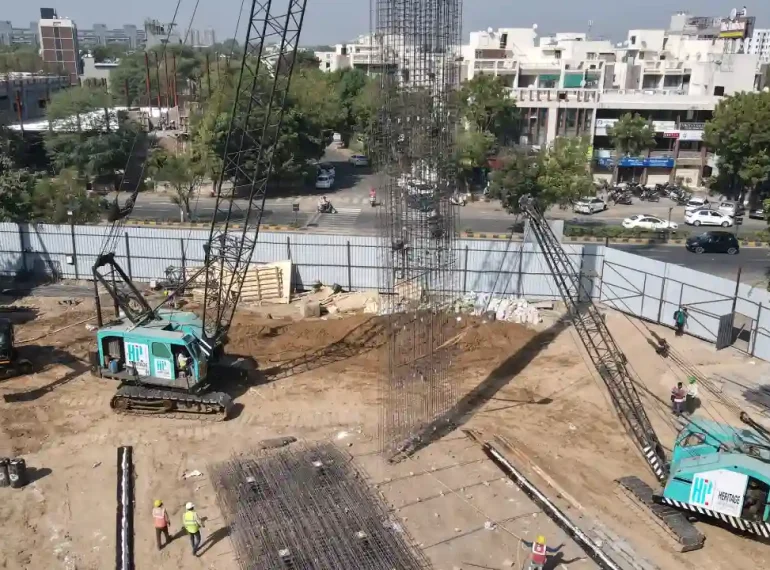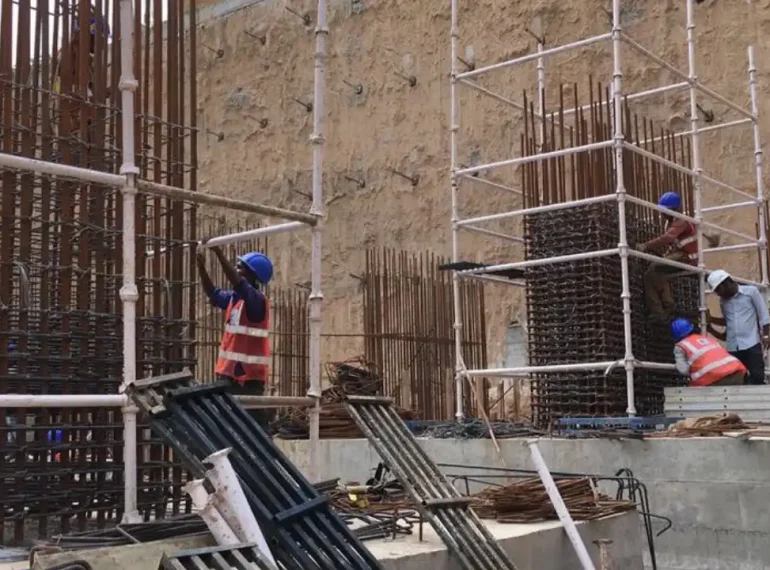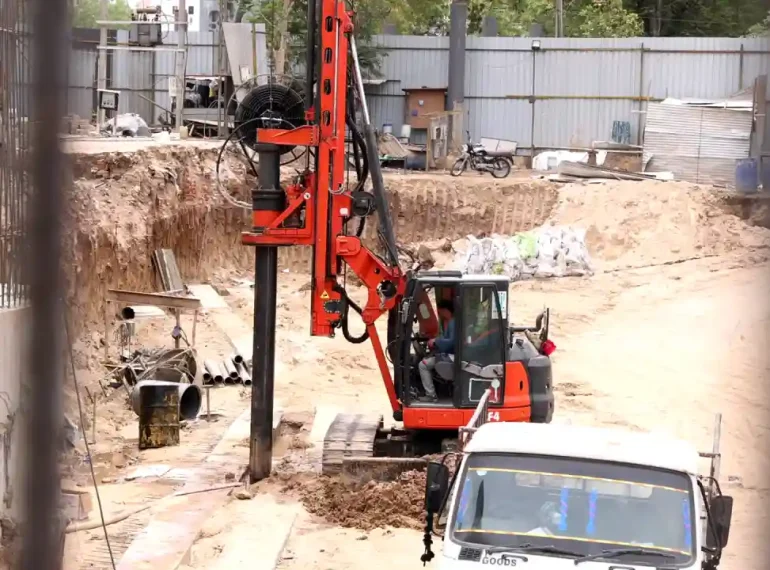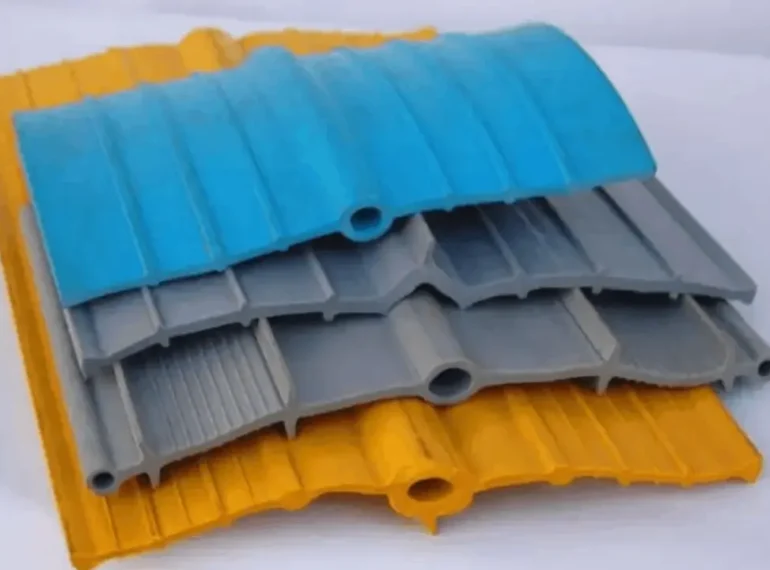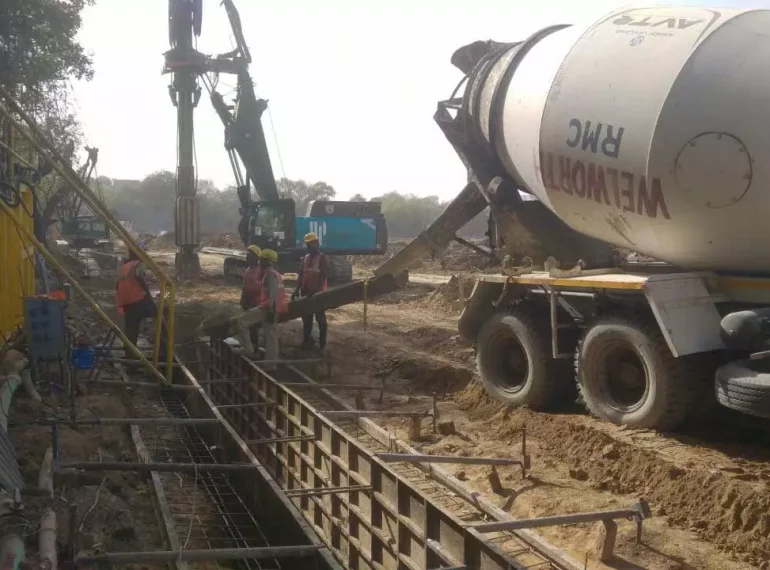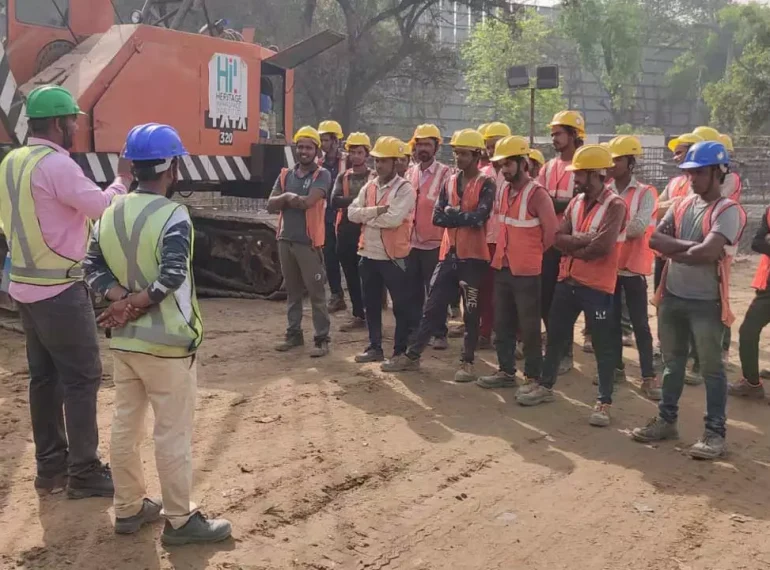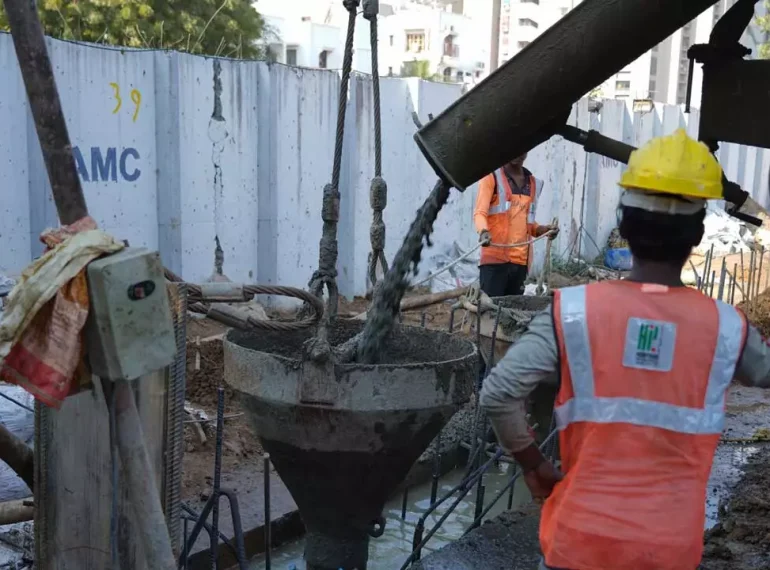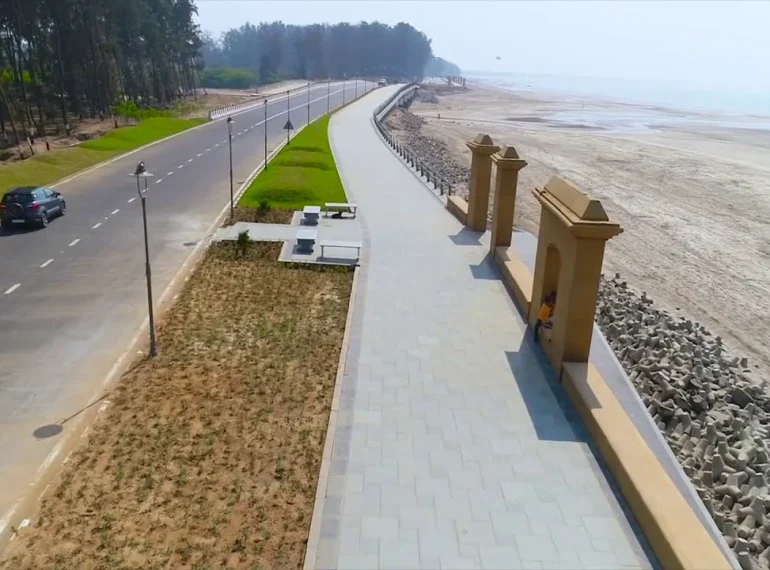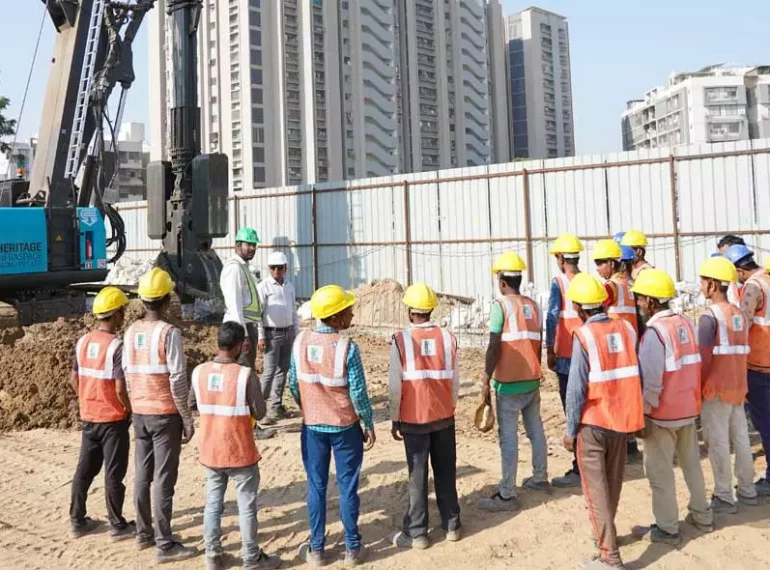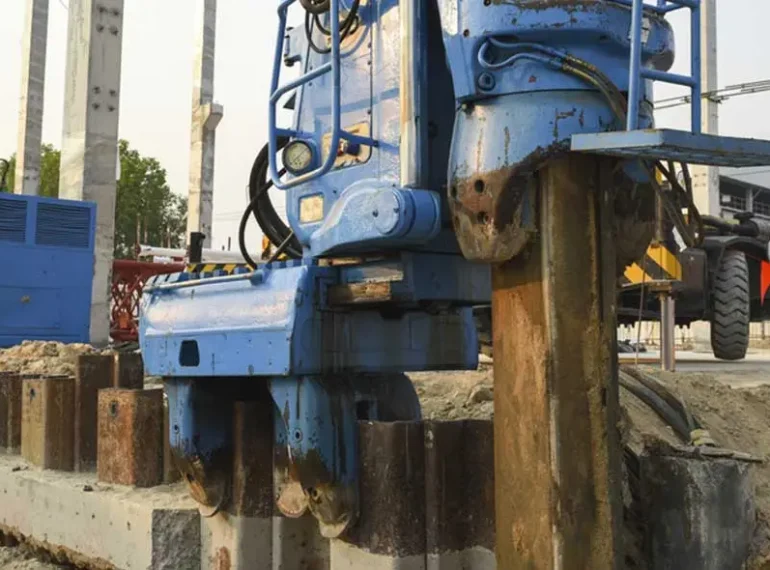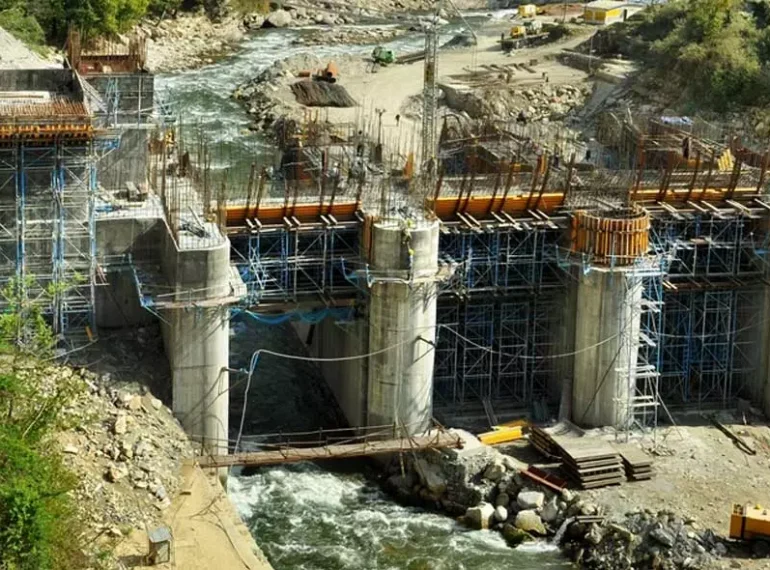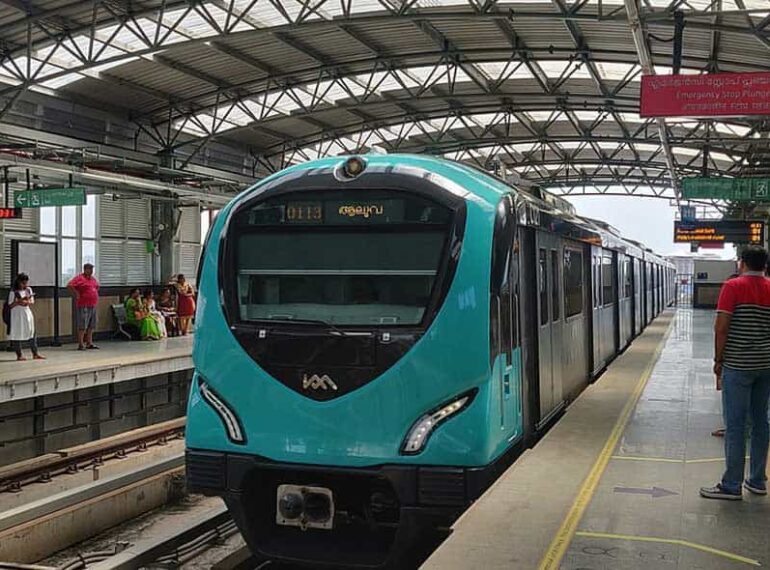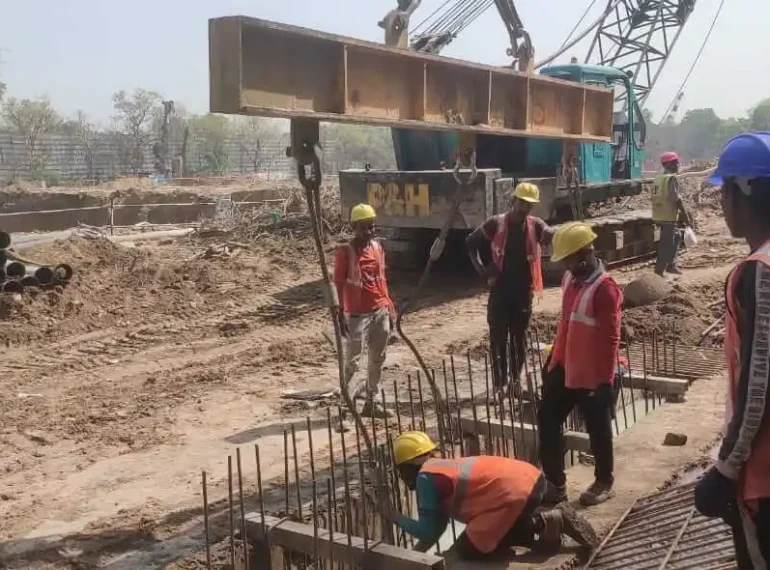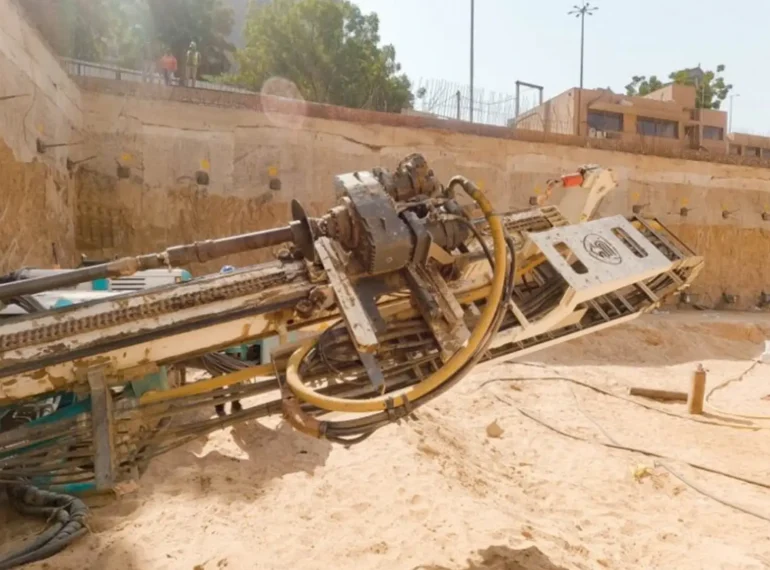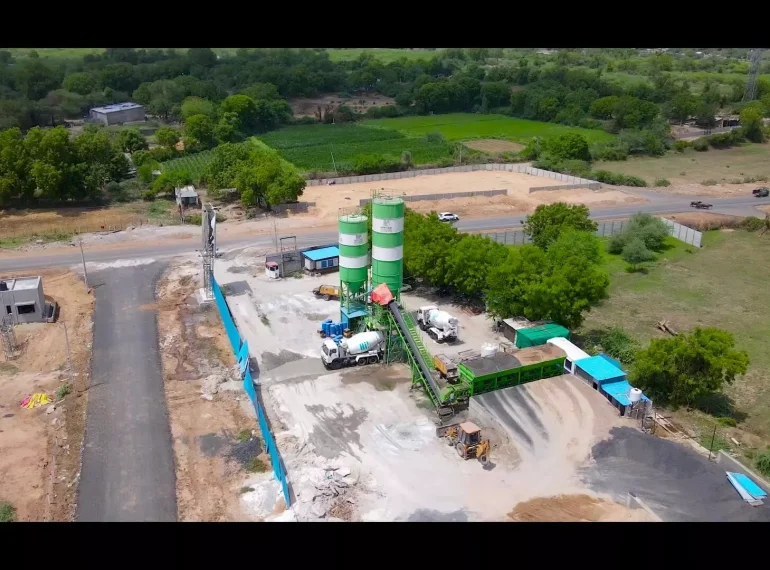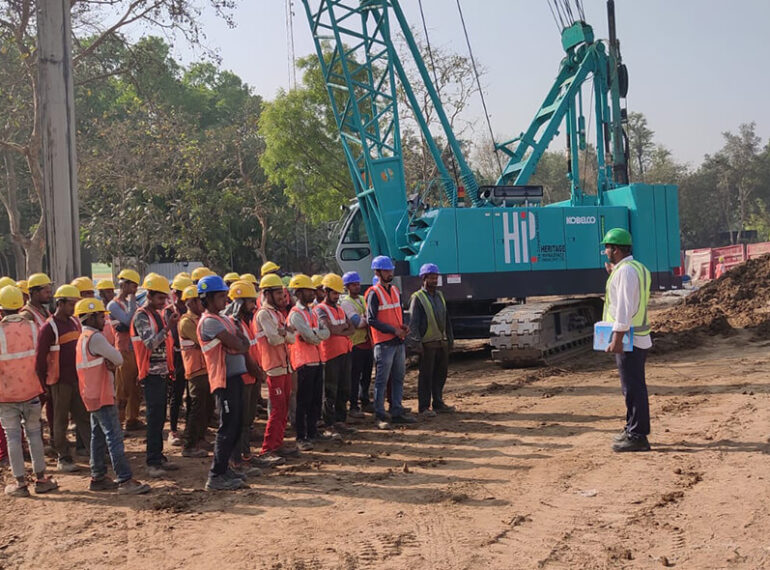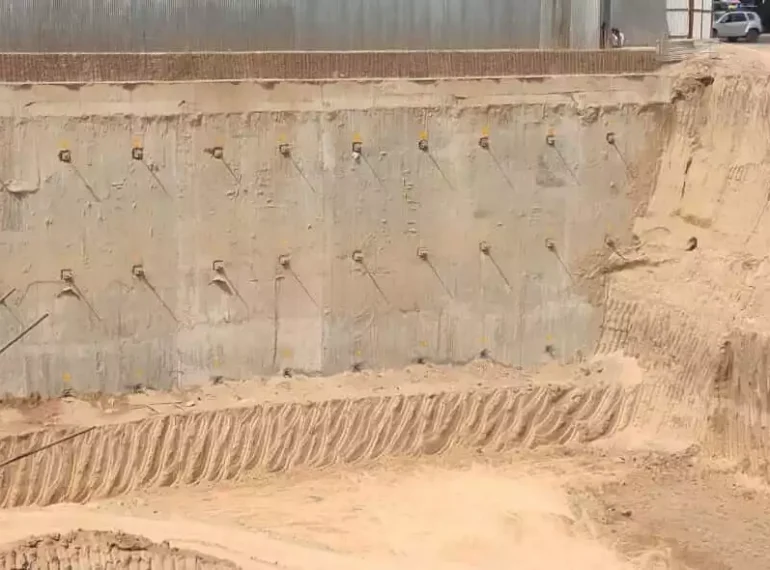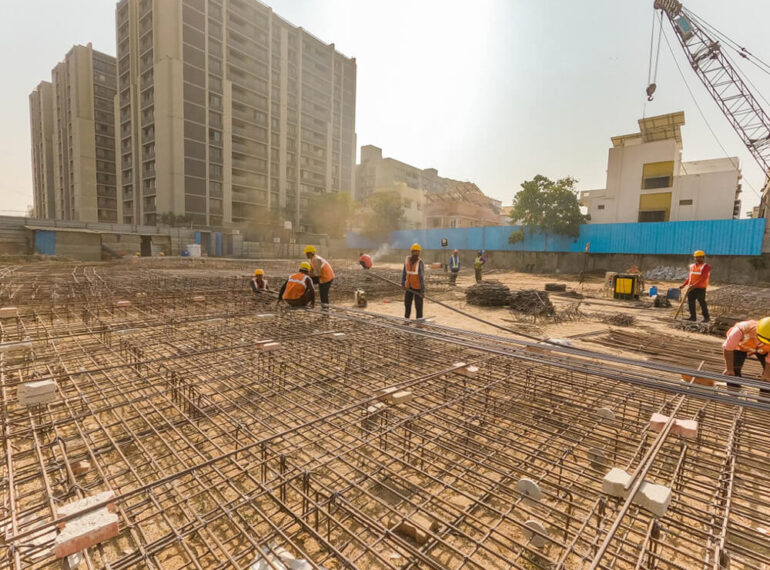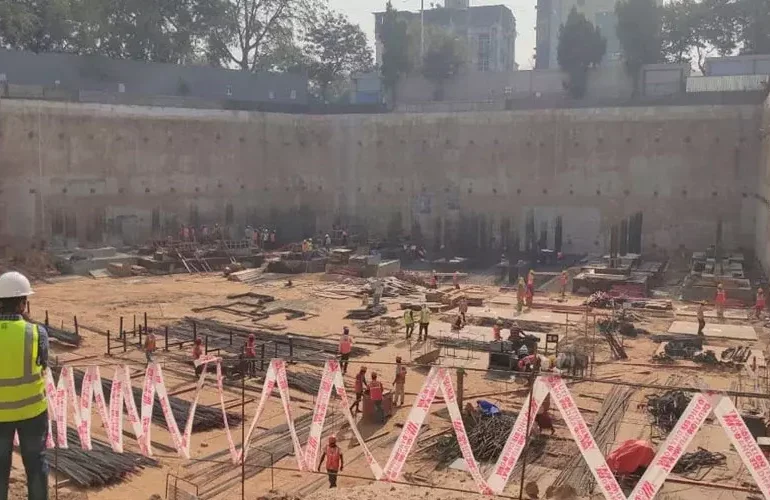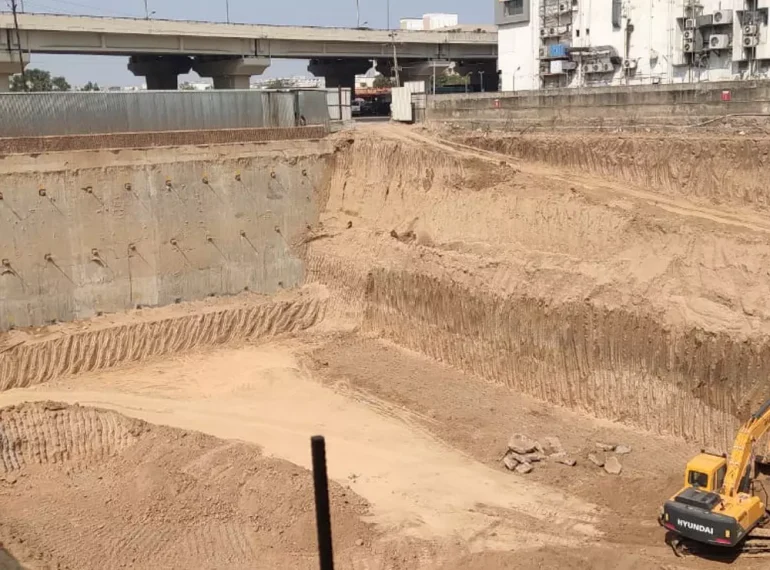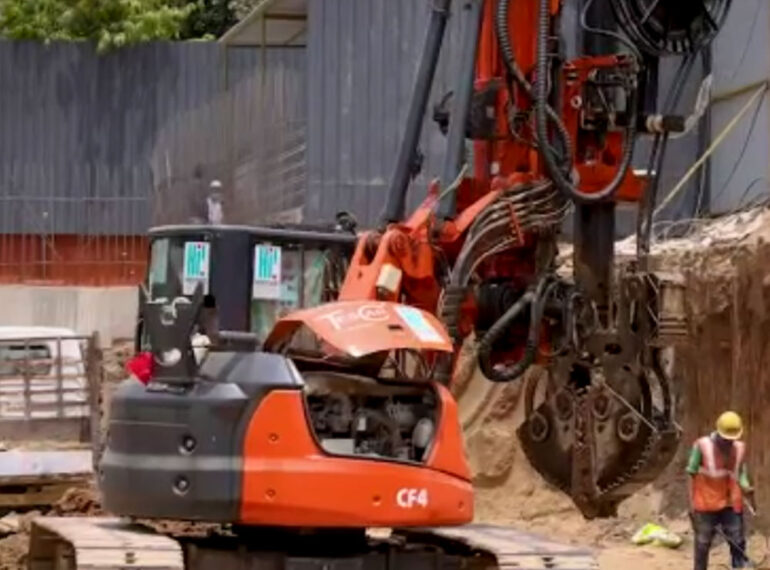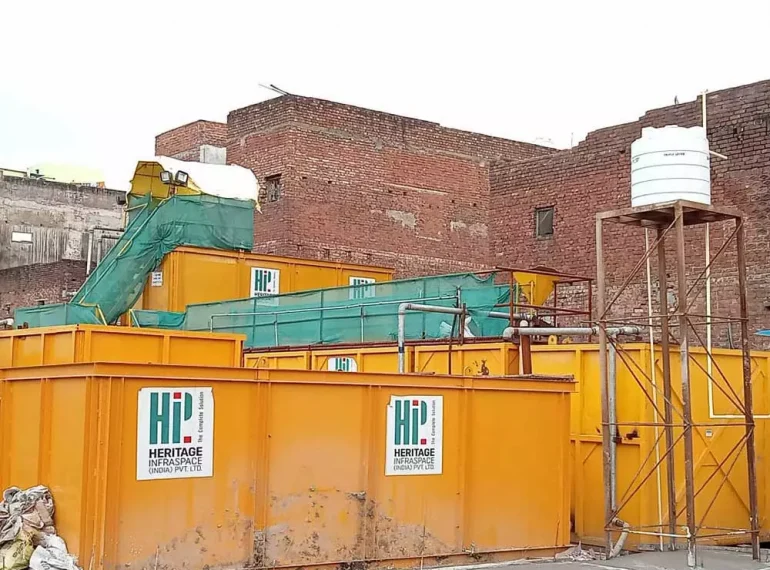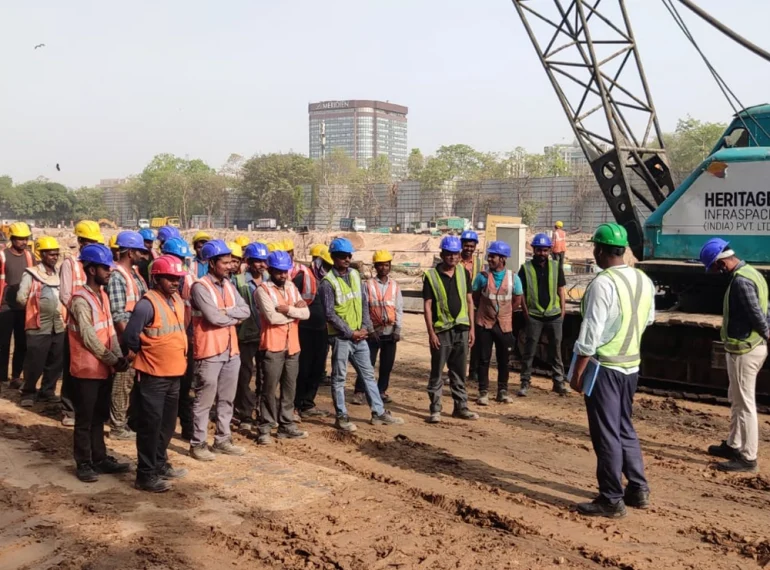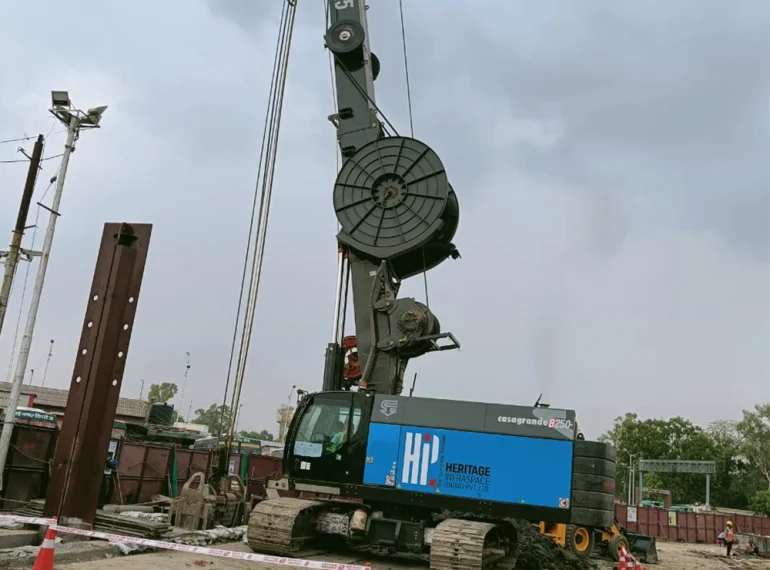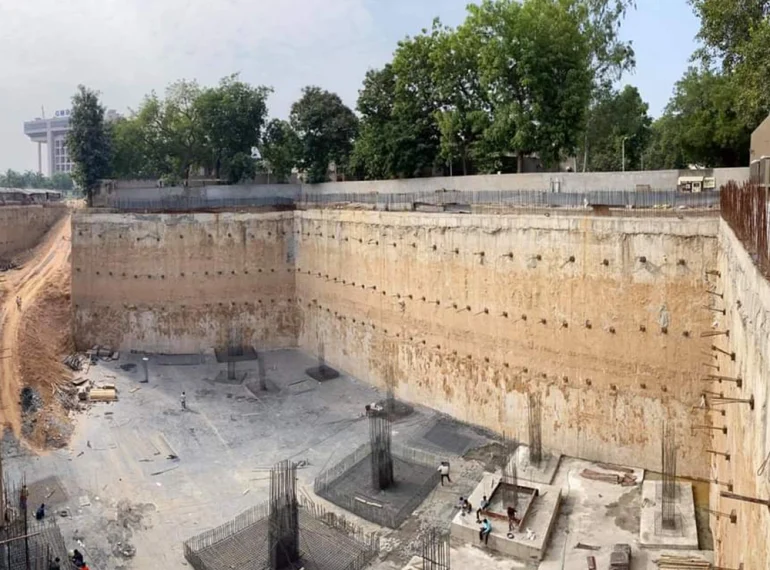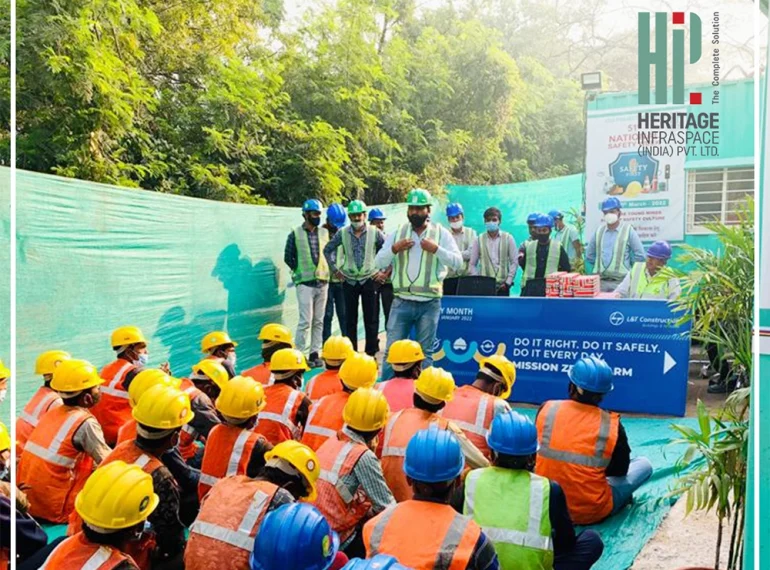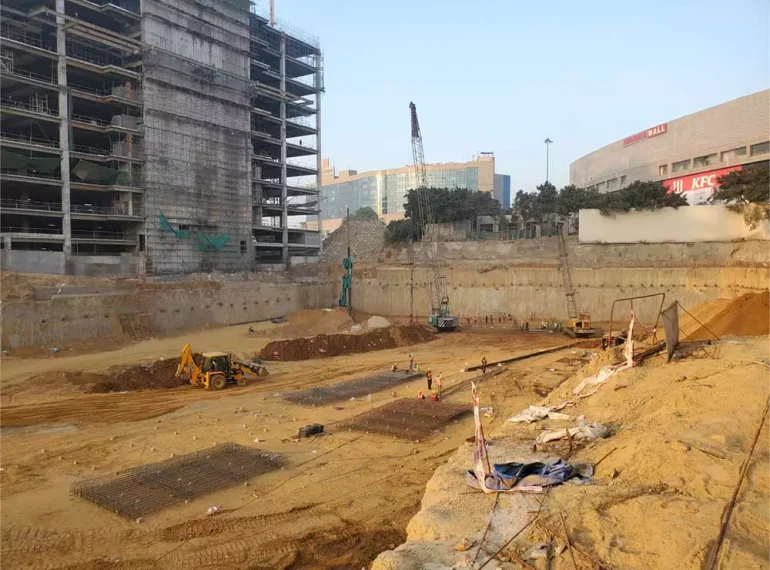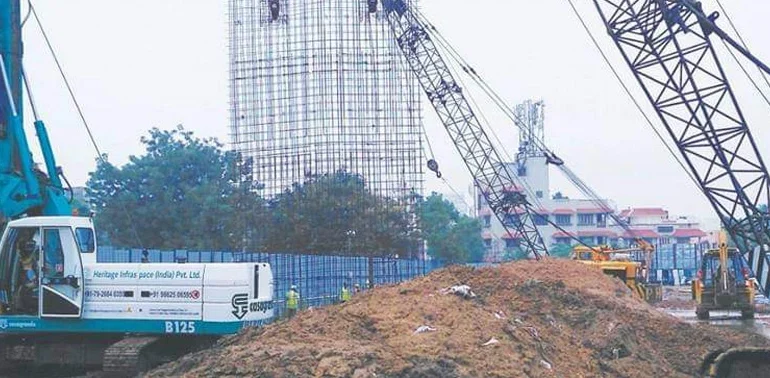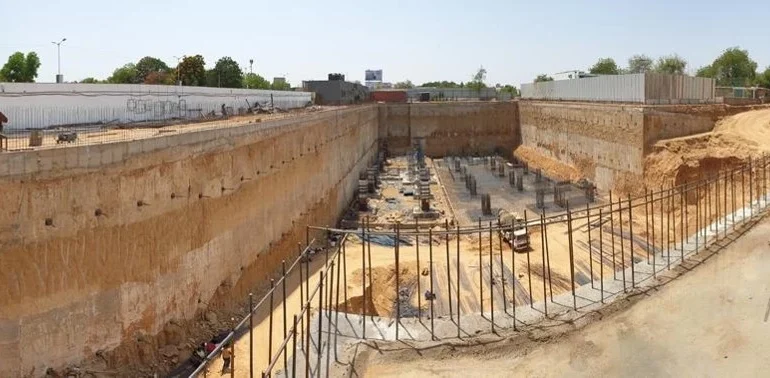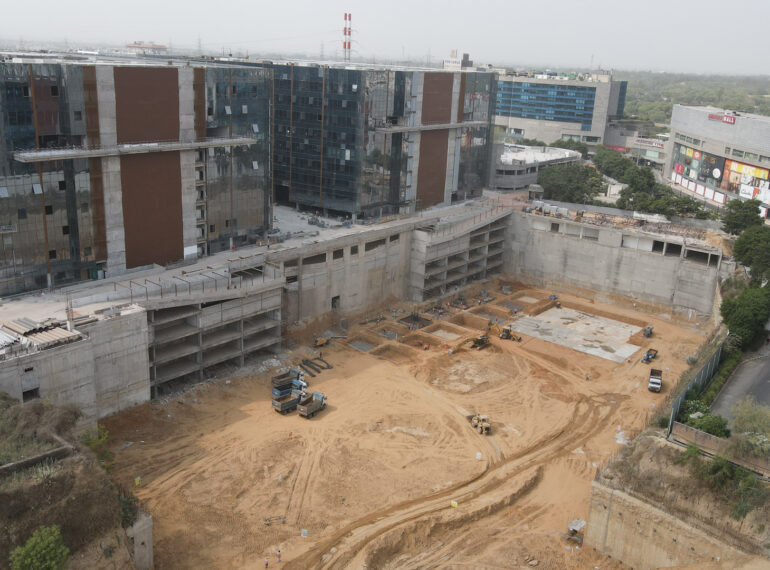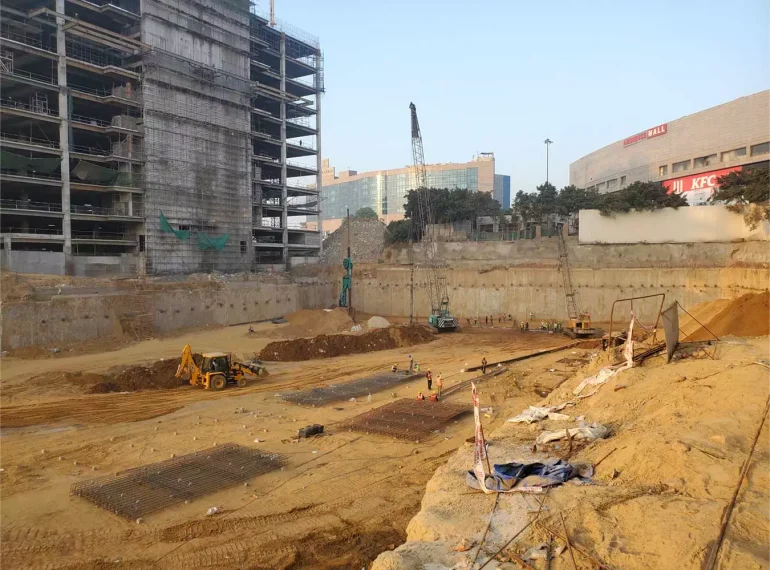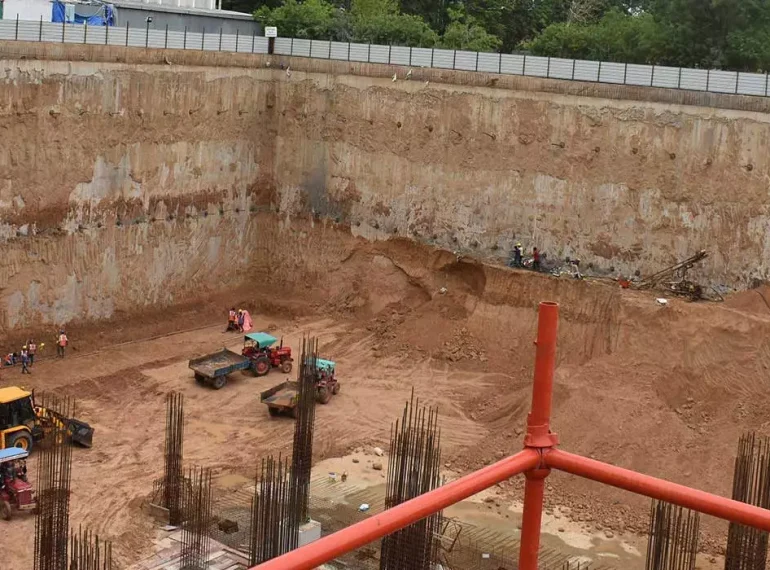As urbanisation continues to shape our world, the demand for efficient and innovative construction technology has never been greater. Basements, once relegated to storage spaces or utility rooms, have now become an integral part of modern architecture, serving a multitude of purposes. Here, we will discuss the five major techniques employed by Heritage Infraspace Pvt. Ltd. (HIPL) in underground basement construction and explore how they are reshaping our cities and pushing the boundaries of modern architecture.
Diaphragm walls or D-walls
Diaphragm wall construction is an advanced building technology for basement construction where a reinforced concrete wall is built deep into the ground. It is typically utilised in projects requiring a strong foundation, such as high-rise buildings, underground basements, or structures near water bodies. The wall is built by excavating a trench and installing steel reinforcement cages, followed by the pouring of concrete into the trench. Diaphragm walls provide essential structural support, prevent water seepage and enable excavation in congested areas. This robust building technique has revolutionised construction, offering enhanced stability, durability and the ability to construct large-scale projects with precision.

Diaphragm wall construction is a revolutionary construction technology pioneered by HIPL
Piling Construction
Piling construction is an essential construction technology that strengthens the foundation of structures. HIPL has in the past employed this method by driving or drilling vertical columns, known as piles, into the ground. These piles, typically made of materials like concrete, steel, or timber, transfer structural loads to stable layers of soil or rock below the surface. In some cases, anchors are used alongside piling to enhance stability by applying additional lateral forces to the soil. Various techniques, such as driven piles and bored piles, are utilised based on soil conditions and project requirements. Piling is crucial when dealing with weak upper soil layers or the need to anchor structures against lateral forces like wind or seismic activity.
Ground Improvement
Ground improvement refers to the implementation of modern building technology aimed at enhancing the characteristics of weak or unstable soil. This process, commonly used in top down construction, improves the load-bearing capacity and stability of the ground. Techniques such as soil grouting and soil stabilisation are employed to achieve these objectives.
Soil grouting involves injecting fluid materials, like cement slurry or cement-based mixtures, into the ground to fill voids and enhance soil properties. On the other hand, soil stabilisation treats the soil with agents such as bentonite slurry or polymers to modify its physical and chemical attributes, improving strength and stability. These ground improvement techniques play a crucial role in excavation projects, tunnelling and retaining wall construction on weak or unstable soil.
Anchoring Systems
Anchoring systems play a vital role in the construction of any diaphragm wall in dams and deep basements. These systems are integral to ensuring the stability and integrity of the structure. Ground anchors are commonly used as reliable restraining mechanisms, transferring loads and preventing structural movement. In contemporary engineering practices like Heritage Infraspace (HIPL), retractable anchors have gained popularity, replacing traditional anchor systems.

Diaphragm wall construction is a revolutionary construction technology pioneered by HIPL
Retractable anchors in construction consist of a lanyard or lifeline that can be adjusted, allowing users to move freely while maintaining safety. They offer distinct advantages in terms of versatility and convenience. With a greater range of movement compared to static anchors, they enable workers to access a wider area without compromising safety. Additionally, their compact and lightweight design makes them easily portable and suitable for various work environments. This combination of features enhances worker productivity while prioritising safety, making retractable anchors an invaluable asset in construction technology.
Waterproofing Solutions
Waterproofing solutions play a crucial role in the construction of diaphragm walls for deep basements and dams. In building technology, one common solution is the use of water stoppers or water bars. These are specially designed components made of flexible materials such as rubber or PVC, which are installed in the joints of the diaphragm walls. Water stoppers create a watertight seal, preventing water ingress into the structure. They effectively block the passage of water through the joints, ensuring the integrity and durability of the diaphragm walls. By implementing such waterproofing solutions, the risk of water seepage and potential damage to the underground structures is minimised, providing long-term protection and stability.
Conclusion
HIPL’s expertise in underground basement construction has revolutionised the industry. With such advanced techniques and a commitment to innovation, we deliver safe, reliable and well-designed underground spaces. Our continuous drive to exceed industry standards enables us to meet evolving client needs. For smart basement construction solutions, email us at info@www.heritageconstruction.in.
Frequently Asked Questions
The maximum depth of a diaphragm wall can vary depending on the project requirements. Generally, diaphragm walls are constructed in discrete panels ranging from 3m to 7m in length. Depths can range from a few metres to tens of metres, depending on the specific application.
Diaphragm walls are considered relatively waterproof structures due to their construction method and use of materials. They provide a barrier against water ingress and can be further enhanced with waterproofing solutions to ensure maximum protection.
Diaphragm walls are typically constructed using reinforced concrete. The concrete is poured into a trench or created using a grab or clamshell bucket. Reinforcement bars are placed to provide additional strength and stability to the wall.
In the construction of deep basements, HIPL utilises advanced equipment such as Tescar and Casagrande rig machines, compressors, excavators and JCBs. These machines are essential for excavating and drilling processes, ensuring efficient and precise construction of the diaphragm walls and other components of the deep basement structure.




